Table of content
Mastering the Art of Baozi Dough: A Comprehensive Guide to Perfecting the Fluffy Steamed Bun Recipe and Fermentation Techniques**
Baozi, or Chinese steamed buns, are a beloved staple in Asian cuisine, celebrated for their soft, pillowy texture and versatile fillings. Whether filled with savory pork, sweet red bean paste, or vibrant vegetables, the success of a baozi lies in its dough—a delicate balance of ingredients, precision, and patience. This article delves into the intricacies of crafting the perfect baozi dough, from selecting the right flour to mastering fermentation techniques that guarantee a fluffy, airy result every time.
Creating exceptional baozi dough begins with understanding the purpose of each ingredient. The primary components are flour, water, yeast, and sometimes sugar or baking powder. Let’s break down their roles:
- Flour: All-purpose flour is commonly used, but bread flour, with its higher protein content (12-14%), enhances gluten development, resulting in a chewier, more elastic texture. For a lighter crumb, some bakers combine all-purpose and cake flour.
- Water: Lukewarm water (around 105–110°F or 40–43°C) activates the yeast without killing it. The hydration level—typically 50–60% of the flour’s weight—affects dough pliability.
- Yeast: Instant dry yeast is preferred for its convenience. It feeds on sugars to produce carbon dioxide, creating air pockets that make the dough rise.
- Sugar: A small amount (1–2% of flour weight) feeds the yeast and adds subtle sweetness.
- Baking Powder (optional): A pinch of double-acting baking powder can provide an extra lift during steaming, though traditional recipes rely solely on yeast.
Step-by-Step Dough Preparation
Mixing the Dough
- Weigh Ingredients: Precision is key. For 500g of flour, use 5g instant yeast, 10g sugar, 5g baking powder (if using), and 250–300ml water.
- Combine Dry Ingredients: Whisk flour, yeast, sugar, and baking powder in a large bowl.
- Add Water Gradually: Pour water in a slow stream while stirring with chopsticks or a dough hook until shaggy clumps form.
Kneading
Kneading develops gluten, the protein network that traps gas bubbles.
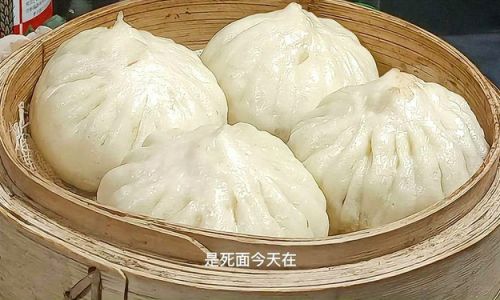
- Technique: On a lightly floured surface, push the dough away from you with the heel of your hand, fold it over, and repeat. Rotate the dough 90° every few pushes.
- Duration: Knead for 10–15 minutes by hand or 8–10 minutes on medium speed with a stand mixer. The dough should feel smooth, elastic, and slightly tacky.
- Windowpane Test: Stretch a small piece of dough. If it becomes translucent without tearing, the gluten is adequately developed.
First Fermentation (Bulk Rise)
This stage allows yeast to multiply and produce CO2.
- Shape: Form the dough into a ball and place it in a greased bowl. Cover with plastic wrap or a damp cloth.
- Environment: Maintain a warm, draft-free space (75–80°F or 24–27°C). Use an oven with the light on or a proofing box.
- Duration: Let rise for 60–90 minutes, or until doubled in volume.
- Signs of Readiness: The dough should feel airy, and indentations made with a finger should slowly spring back.
Punching Down and Resting
- Deflate: Gently press the dough to release large gas bubbles. Avoid over-kneading, as this can tighten the gluten.
- Rest: Let the dough relax for 10–15 minutes. This makes it easier to shape.
Shaping and Filling
- Portion: Divide the dough into 40–50g pieces for standard-sized baozi.
- Roll: Flatten each piece into a 4-inch circle, thicker in the center and thinner at the edges.
- Fill and Seal: Place 1–2 tablespoons of filling in the center, then pinch the edges to seal tightly.
Second Fermentation (Final Rise)
This step ensures the buns puff up beautifully during steaming.
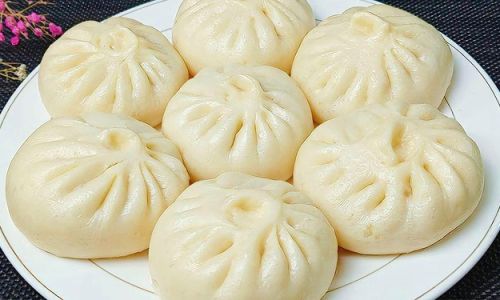
- Arrange: Place shaped baozi on parchment-lined trays, leaving 2 inches between them.
- Cover: Use a damp cloth to prevent drying.
- Duration: Let rise for 20–30 minutes in a warm environment. The dough should feel soft and slightly puffy.
Fermentation Science: Tips for Success
Temperature Control
- Ideal Yeast Activity: Yeast thrives between 75–85°F (24–29°C). Colder temperatures slow fermentation; hotter ones may kill the yeast.
- Adjustments: In cold climates, place the dough near a preheated oven (turned off) or use a heating pad on low.
Humidity
- Dry Air Issues: Low humidity can crust the dough’s surface. Cover with a damp cloth or place a bowl of hot water in the proofing area.
Fermentation Time vs. Over-Proofing
- Under-Proofed Dough: Buns will be dense, with minimal rise.
- Over-Proofed Dough: The gluten structure weakens, causing buns to collapse or have a sour taste.
Troubleshooting Common Issues
- Dough Not Rising: Check yeast freshness (it expires after 6 months). Ensure water wasn’t too hot.
- Dense Texture: Increase hydration or kneading time.
- Uneven Buns: Ensure even filling distribution and consistent dough thickness.
Steaming Techniques for Perfect Baozi
- Prep the Steamer: Use a bamboo steamer lined with parchment or cabbage leaves to prevent sticking.
- Cold Start: Place baozi in a cold steamer, then turn on the heat. This allows gradual warming, preventing sudden temperature shocks.
- Steam Time: Cook for 12–15 minutes (depending on size). Larger buns may need 18–20 minutes.
- Rest After Steaming: Turn off the heat and let buns sit for 5 minutes before opening the lid. Sudden temperature changes can cause shrinking.
Variations and Expert Tips
- Tangzhong Method: For ultra-soft baozi, incorporate a roux (cooked flour-water paste) into the dough. This increases moisture retention.
- Sourdough Baozi: Replace instant yeast with a sourdough starter for a tangy flavor. Fermentation times will double.
- Colorful Dough: Add natural dyes like matcha (green), beetroot (pink), or charcoal (black) for visual appeal.
- Freezing: Uncooked baozi can be frozen for up to 3 months. Steam directly from frozen, adding 2–3 minutes to the cooking time.
Conclusion
Crafting flawless baozi dough is an art that blends science and intuition. By mastering ingredient ratios, fermentation conditions, and steaming techniques, even novice bakers can achieve professional results. Remember, patience is key—rushing the process often leads to disappointment. Experiment with fillings and adjustments to suit your taste, and don’t be discouraged by initial hiccups. With practice, you’ll unlock the secret to baozi so light they seem to float, earning a permanent spot in your culinary repertoire.
Whether enjoyed for breakfast, as a snack, or alongside a hearty meal, these steamed treasures are a testament to the joy of homemade bread. So, roll up your sleeves, embrace the rhythm of rising dough, and savor the satisfaction of creating something truly extraordinary from simple ingredients.
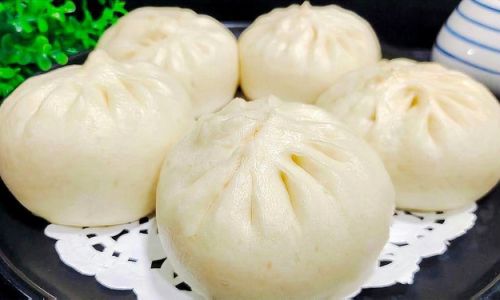

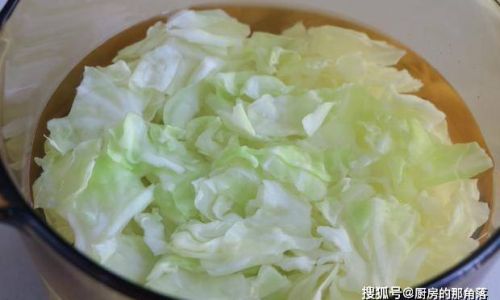
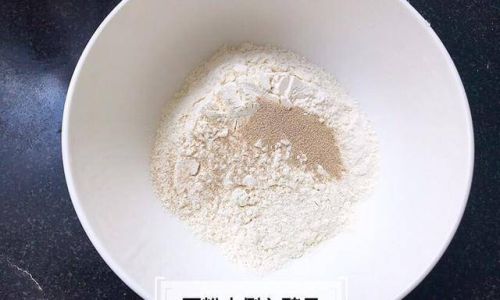
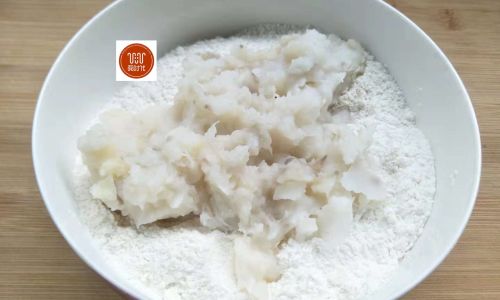
0 comments